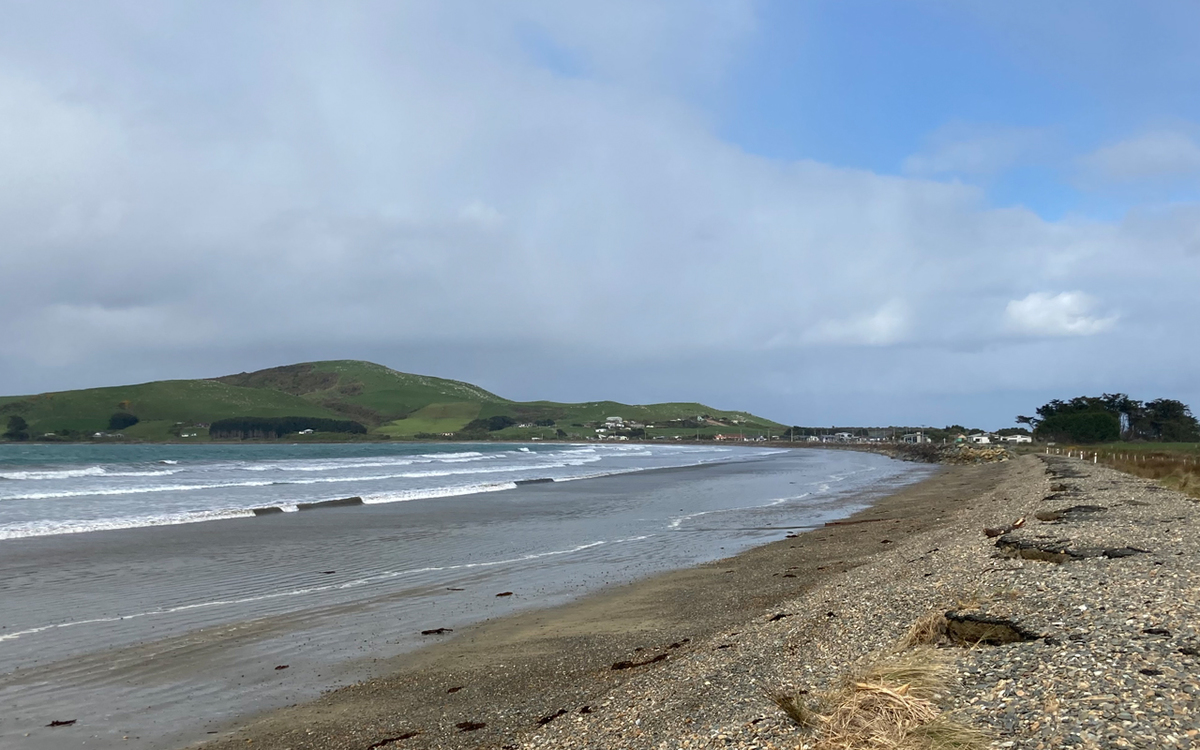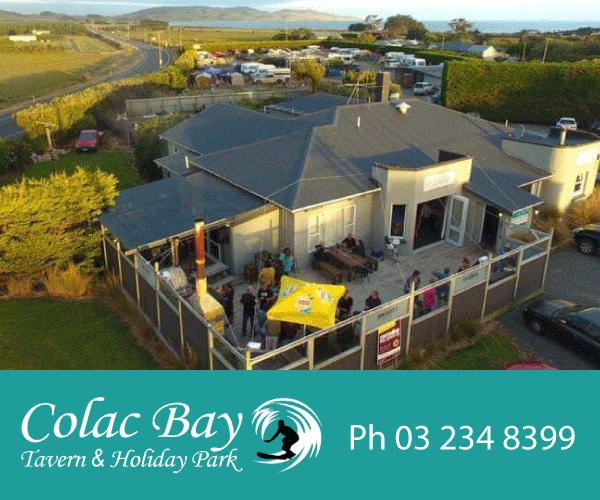Colac Bay erosion issue reaches tipping point as upset residents seek legal advice
Local Democracy Reporter
13 October 2021, 4:51 AM
 A view of Colac Bay/Ōraka taken from the crumbling coastal road which separates the ocean from an old dump site. Photo: LDR/Matthew Rosenberg
A view of Colac Bay/Ōraka taken from the crumbling coastal road which separates the ocean from an old dump site. Photo: LDR/Matthew RosenbergIn sleepy Colac Bay/Ōraka, a battle is brewing behind the veneer of perfect waves and endless summers.
The popular holiday destination, home to about 60 permanent residents, is protected from the Southern Ocean by a sprawling rock wall.
But the sea is rising up to meet the town that faces Foveaux Strait.
Fearful an old dump could be exposed where the rocks give way to loose shingle, residents Alan and Deen McKay are leading the charge against a council they claim is dis-interested.
Advertisement: Colac Bay Tavern
“We want what the residents of Colac Bay deserve.
"That they can go to sleep at night and know the sea isn’t going to meet them at the door," McKay says.
The McKays' battle began about seven years ago, but has escalated following a storm in September which they say washed away a significant portion of the closed coastal road.
The crumbling road is the only thing separating the ocean from the old dumpsite at the section of coastline where the rock wall peters out.
Advertisement: Tui Base Camp
The McKays now fear if immediate action is not taken, the bank could be breached and waste washed out to sea with the next big storm.
Just what is contained within the land is unclear, but residents recently approached by the McKays to produce official statements have painted a grim picture.
About 10 past and present residents came forward with signed statements which have been presented to both Southland District Council and Environment Southland.
According to the individual accounts, contaminants buried in the land behind Colac Foreshore Rd include car bodies, car batteries, plastics, oil, tyres, herbicides, and paint.
Advertisement: Rabco
Resident Norman Cleaver sums up the claims: “everything and anything was dumped here.”
Lynette Heath, who lived at Colac Bay between 1953 and 1970, says there were regular fires at the tip with “black billowing smoke”.
Her memory is backed up by another former resident, Benita Dudfield, in a letter previously sent to Environment Southland.
“For 33 years we ... endured the smell from fires lit at the site regularly by those dumping waste.”
Advertisement: D T King
“I can assure you the area is very toxic, and certainly the local people living there now have every reason to be concerned about the sea encroaching into that area,” Dudfield said in the letter.
Fed up with the council’s lack of action, the McKays have now enlisted the legal advice of resource management and local government lawyer Hans van der Wal to lay out the statutory obligations for parties concerned.
In an email sent last week to key figures at Environment Southland, Southland District Council and Ōraka Aparima Rūnaka, McKay said she had sought legal advice and stated the obligations of all three parties to ensure the containment is kept at bay.
The land in question belongs to the Ōraka Aparima Rūnaka.
Advertisement: Aparima Restaurant & Bar
Rūnaka kaihautū Riki Dallas said he wanted the council to provide evidence of what was in the site before jumping to conclusions about toxic waste.
“If it is [toxic], we’ll be looking at the council to come up with a solution to rectify any sort of environmental damage or harm that may be caused ... without pointing fingers, jumping up and down, or accusing people.”
Last week, Southland District Council infrastructure and environmental services group manager Matt Russell sent an email to the McKays saying the landfill had previously been
classified as "low risk".
Russell said this was based on several factors, including waste type, volume, groundwater and surface water proximity, capping, containment and toxicity.
He said it had already been acknowledged that over the next three to five years significant investment was required for the maintenance of the wall.
He did not indicate if this included extending it to protect the dump site, and could not be reached for comment.
McKay will address an Ōraka Aparima Community Board meeting on tonight with her concerns.
Matthew Rosenberg
Local Democracy Reporting Editor
Republished by Arrangement






